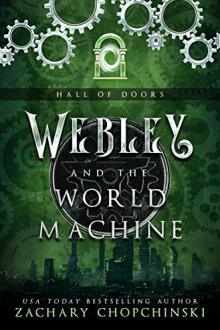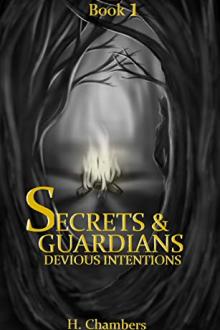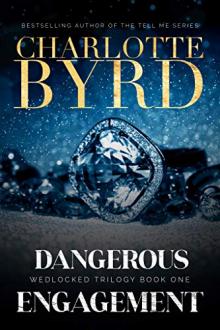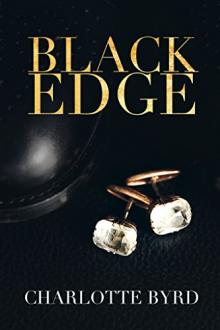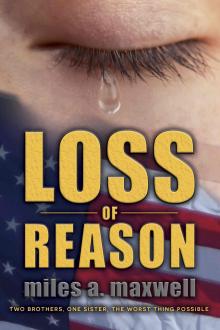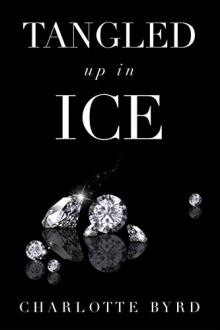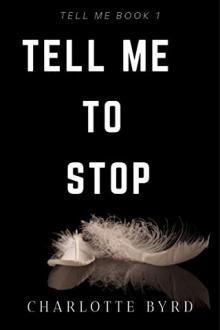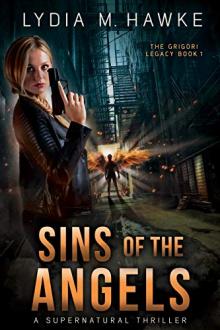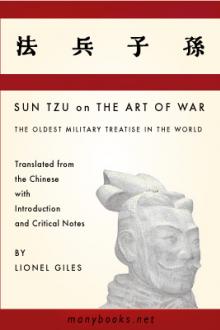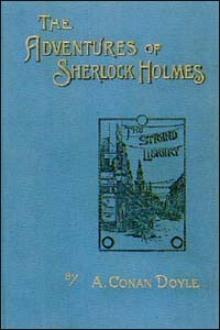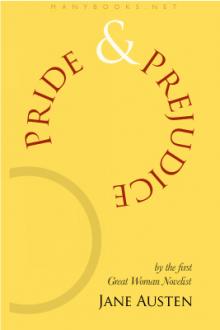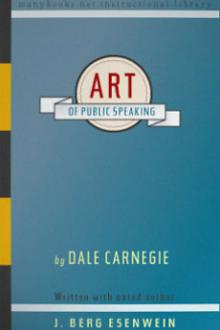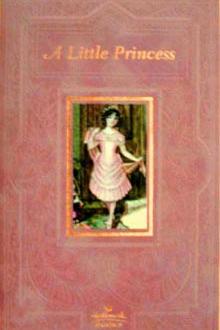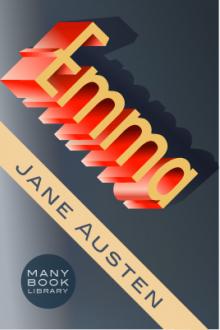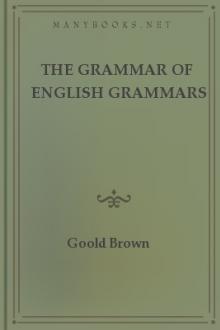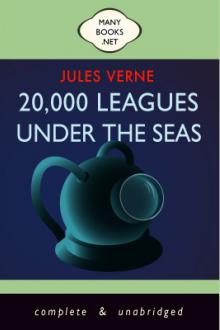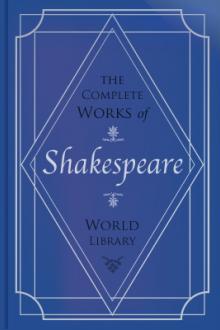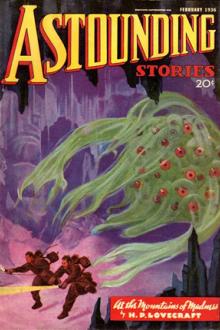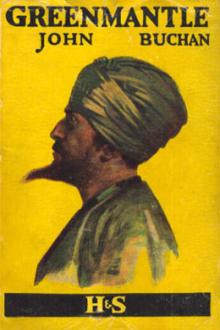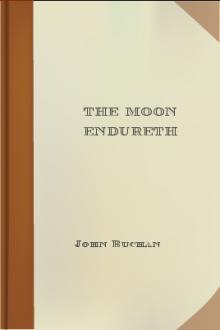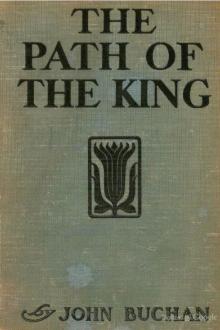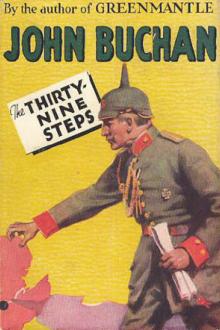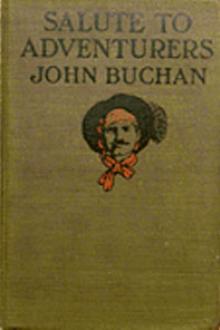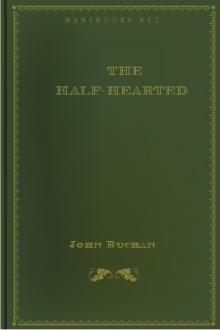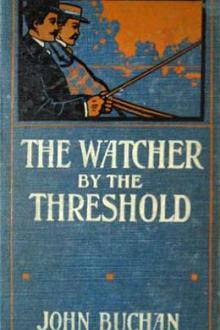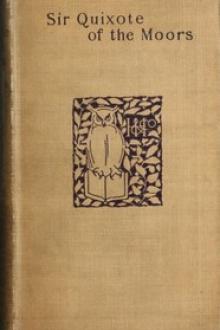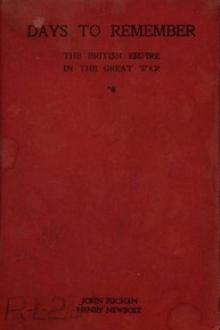Mr. Standfast
Mr. Standfast
The third part of a trilogy which begins with The Thirty-Nine Steps and Greenmantle.
Book Excerpt
e practised indifferently. Somehow or other he had got a Pilgrim's Progress, from which he seemed to extract enormous pleasure. And then at the end, quite casually, he mentioned that he had been badly wounded and that his left leg would never be much use again.
After that I got frequent letters, and I wrote to him every week and sent him every kind of parcel I could think of. His letters used to make me both ashamed and happy. I had always banked on old Peter, and here he was behaving like an early Christian martyr--never a word of complaint, and just as cheery as if it were a winter morning on the high veld and we were off to ride down springbok. I knew what the loss of a leg must mean to him, for bodily fitness had always been his pride. The rest of life must have unrolled itself before him very drab and dusty to the grave. But he wrote as if he were on the top of his form and kept commiserating me on the discomforts of my job. The picture of that patient, gentle old fellow, hobbling about h
Editor's choice
(view all)Popular books in Adventure, Espionage, Thriller, Fiction and Literature, War
Readers reviews
4.5
LoginSign up
The third Richard Hannay novel is possibly the best. It is much better than the JamesBondish Greenmantle with its frequent coincidental meetings that strained credulity. And it is more complicated than The Thirty-nine Steps.
The first third of the book has Hannay recalled from the (WWI) western front and given orders to infiltrate a batch of British pacifists looking for a German spymaster operating in England. It reminded me of Steps with its chase of Hannay across the Scottish countryside and skin-of-the-teeth escapes from authorities. It ends with the startling and discouraging discovery of an old enemy.
The middle of the book involves the pursuit of the spymaster across Europe in wartime, uncovering his network and trying to thwart the damage he was doing. The characters introduced in Greenmantle are all fully developed and several new ones are introduced, notably, Mary, a woman as gutsy as Hannay, and everyone's love interest. That portion of the novel is almost all character-driven--people do the things they do because of the way they're made.
The final third has Hannay back at the front fighting Germans, trying to hold his men together long enough for the French to reenforce them.
The parts hold together well and characters recur in all of them. The only criticism I have of the book is that I regret how it glorifies war.
The first third of the book has Hannay recalled from the (WWI) western front and given orders to infiltrate a batch of British pacifists looking for a German spymaster operating in England. It reminded me of Steps with its chase of Hannay across the Scottish countryside and skin-of-the-teeth escapes from authorities. It ends with the startling and discouraging discovery of an old enemy.
The middle of the book involves the pursuit of the spymaster across Europe in wartime, uncovering his network and trying to thwart the damage he was doing. The characters introduced in Greenmantle are all fully developed and several new ones are introduced, notably, Mary, a woman as gutsy as Hannay, and everyone's love interest. That portion of the novel is almost all character-driven--people do the things they do because of the way they're made.
The final third has Hannay back at the front fighting Germans, trying to hold his men together long enough for the French to reenforce them.
The parts hold together well and characters recur in all of them. The only criticism I have of the book is that I regret how it glorifies war.
- Upvote (1)
- Downvote (0)
I really enjoyed this book. I don't see the problem with the class issues since I would expect that of a British man living in the early 1900s.
I saw someone else's review of Thirty nine steps saying that the plot was far fetched. Perhaps, at times in all three books the plot is far fetched, but then again this is fiction!
I hope you enjoy it as much as I did.
I saw someone else's review of Thirty nine steps saying that the plot was far fetched. Perhaps, at times in all three books the plot is far fetched, but then again this is fiction!
I hope you enjoy it as much as I did.
01/28/2009
Frankly, after the first two novels in this series, Mr. Standfast was a let down -- it seemed disjointed, forced, and more stridently "pro war" than the last two.
The characterizations of anyone not British, upper-class, white, and militaristic were annoyingly two-dimensional and insulting as well.
The characterizations of anyone not British, upper-class, white, and militaristic were annoyingly two-dimensional and insulting as well.
02/18/2006
With The Thirty-Nine Steps (1915) and Greenmantle (1916) this novel makes the third of a trilogy on aspects of the First World War. Buchan's History of the War afforded him inside knowledge that fed his novels with realism even to which he added the spice of imagination. (In 1917 he was Director of the Department of Information, in 1918 Director of Intelligence in the Ministry of Information.)
His tale moves swiftly. The scene changes purposefully through London, a fictional Home Counties location, Glasgow, the Highlands and Islands, and Switzerland prepare the way for a climax in the great German offensive of March 1918, Ludendorff's last, almost successful gambler's throw.
Buchan's description of the accompanying artillery barrage is ominously and compellingly realistic: you hear the low thunder of the encroaching guns. And the allied trenches provide a dramatic setting for the death of the spy hunted by Richard Hannay and his little team of counterspies.
The threat from pacifism which was as genuine feature of the war years gives the spy his cover; there is a space for Red Clydeside; the submarine menace is used in an unexpected way; some Highland local colour is apt for the period but also for the people described; and generally the characters present a wide spectrum of wartime life.
Hannay has something of the now conventional amateur who beats the professionals at their own game. The spy's identity may well be based on someone involved in a scandal that affected the Kaiser's entourage. There is a sympathetic portrait of a conscientious objector. An American already in Greenmantle is perhaps the author's way of saying 'Come over and help us' - which had to wait for the sinking of the Lusitania and the Zimmermann telegram for its realisation. The young, clever and effective woman agent makes up for the (sometimes needlessly lamented) virtual womanlessness of The Thirty-Nine Steps. Not least we have the war in the air: a newcomer, Archie Roylance, will reappear in Buchan's later novels. South Africa, recalling Buchan's spell there at the beginning of the century, is represented by Peter Pienaar, who already figured in Greenmantle and much more briefly in The Thirty-Nine Steps.
Two idealistic themes inform the story: Peter Pienaar's call for fortitude, and The Pilgim's Progress. The allied triumph through faith and persistence, against heavy odds, is also the recipe for the individual's triumph against despair.
J C G Greig
www.johnbuchansociety.co.uk
His tale moves swiftly. The scene changes purposefully through London, a fictional Home Counties location, Glasgow, the Highlands and Islands, and Switzerland prepare the way for a climax in the great German offensive of March 1918, Ludendorff's last, almost successful gambler's throw.
Buchan's description of the accompanying artillery barrage is ominously and compellingly realistic: you hear the low thunder of the encroaching guns. And the allied trenches provide a dramatic setting for the death of the spy hunted by Richard Hannay and his little team of counterspies.
The threat from pacifism which was as genuine feature of the war years gives the spy his cover; there is a space for Red Clydeside; the submarine menace is used in an unexpected way; some Highland local colour is apt for the period but also for the people described; and generally the characters present a wide spectrum of wartime life.
Hannay has something of the now conventional amateur who beats the professionals at their own game. The spy's identity may well be based on someone involved in a scandal that affected the Kaiser's entourage. There is a sympathetic portrait of a conscientious objector. An American already in Greenmantle is perhaps the author's way of saying 'Come over and help us' - which had to wait for the sinking of the Lusitania and the Zimmermann telegram for its realisation. The young, clever and effective woman agent makes up for the (sometimes needlessly lamented) virtual womanlessness of The Thirty-Nine Steps. Not least we have the war in the air: a newcomer, Archie Roylance, will reappear in Buchan's later novels. South Africa, recalling Buchan's spell there at the beginning of the century, is represented by Peter Pienaar, who already figured in Greenmantle and much more briefly in The Thirty-Nine Steps.
Two idealistic themes inform the story: Peter Pienaar's call for fortitude, and The Pilgim's Progress. The allied triumph through faith and persistence, against heavy odds, is also the recipe for the individual's triumph against despair.
J C G Greig
www.johnbuchansociety.co.uk
12/04/2005
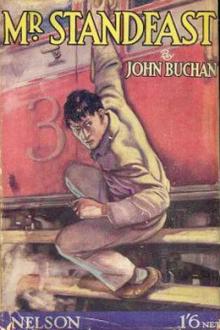
 Free Download
Free Download


